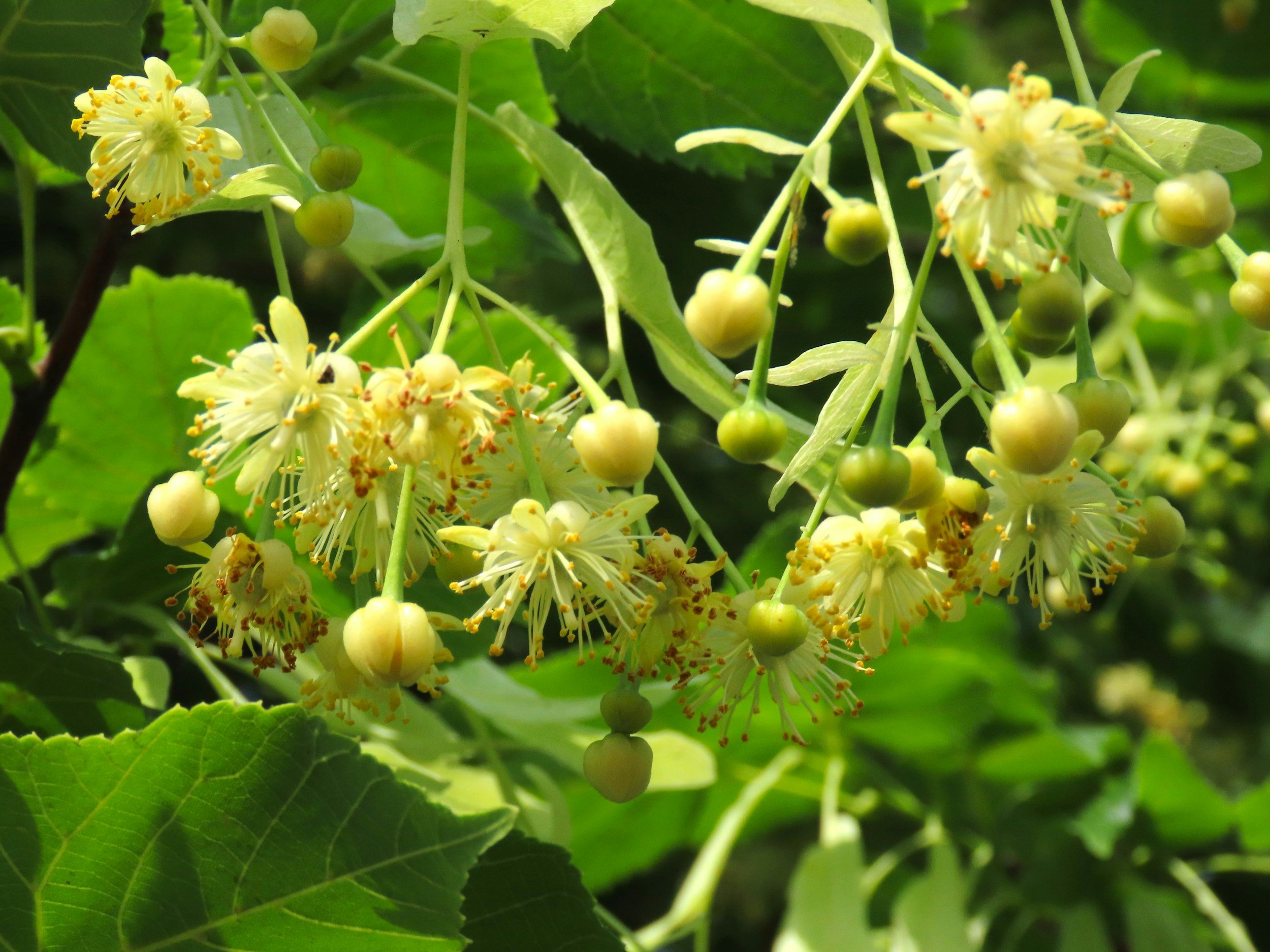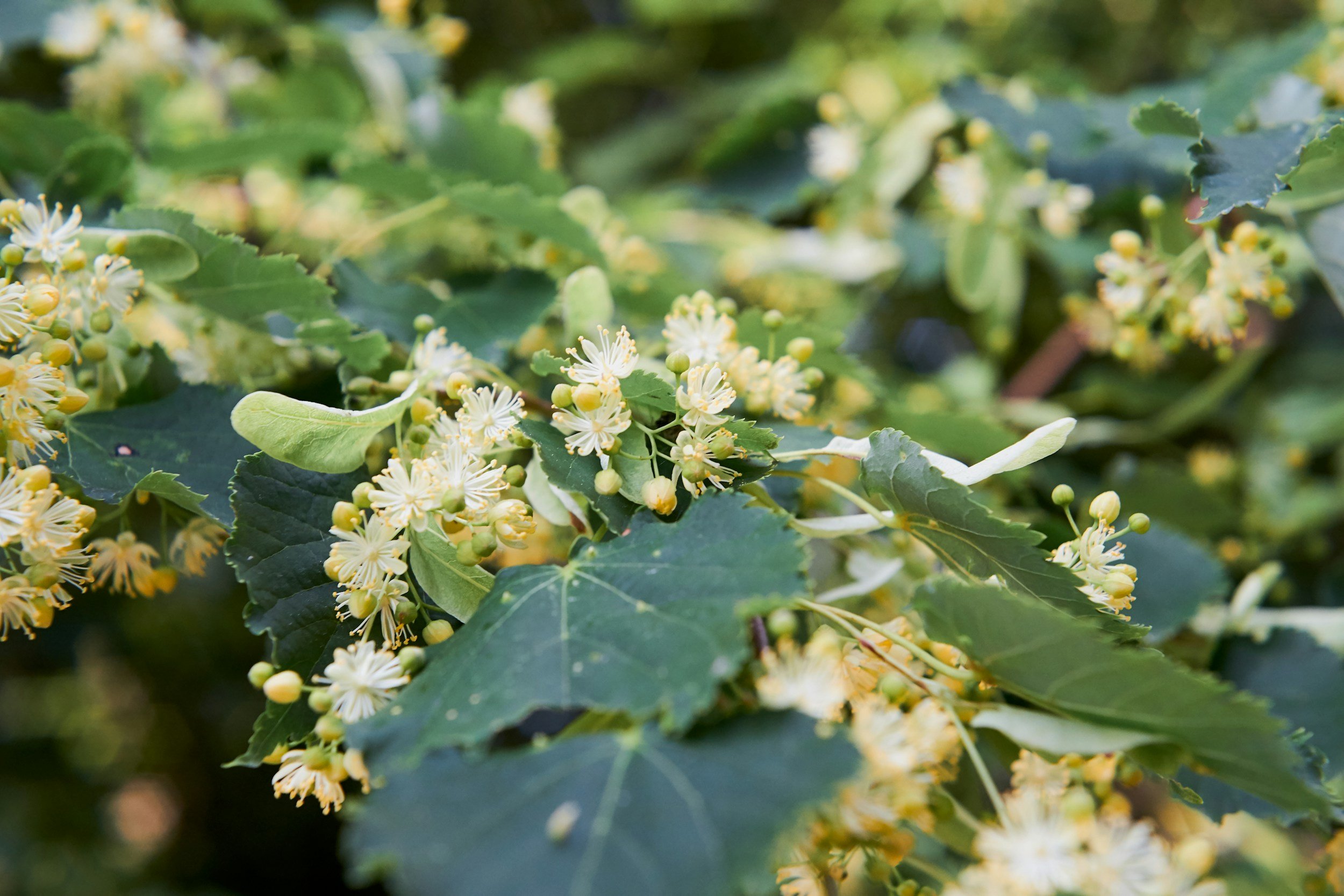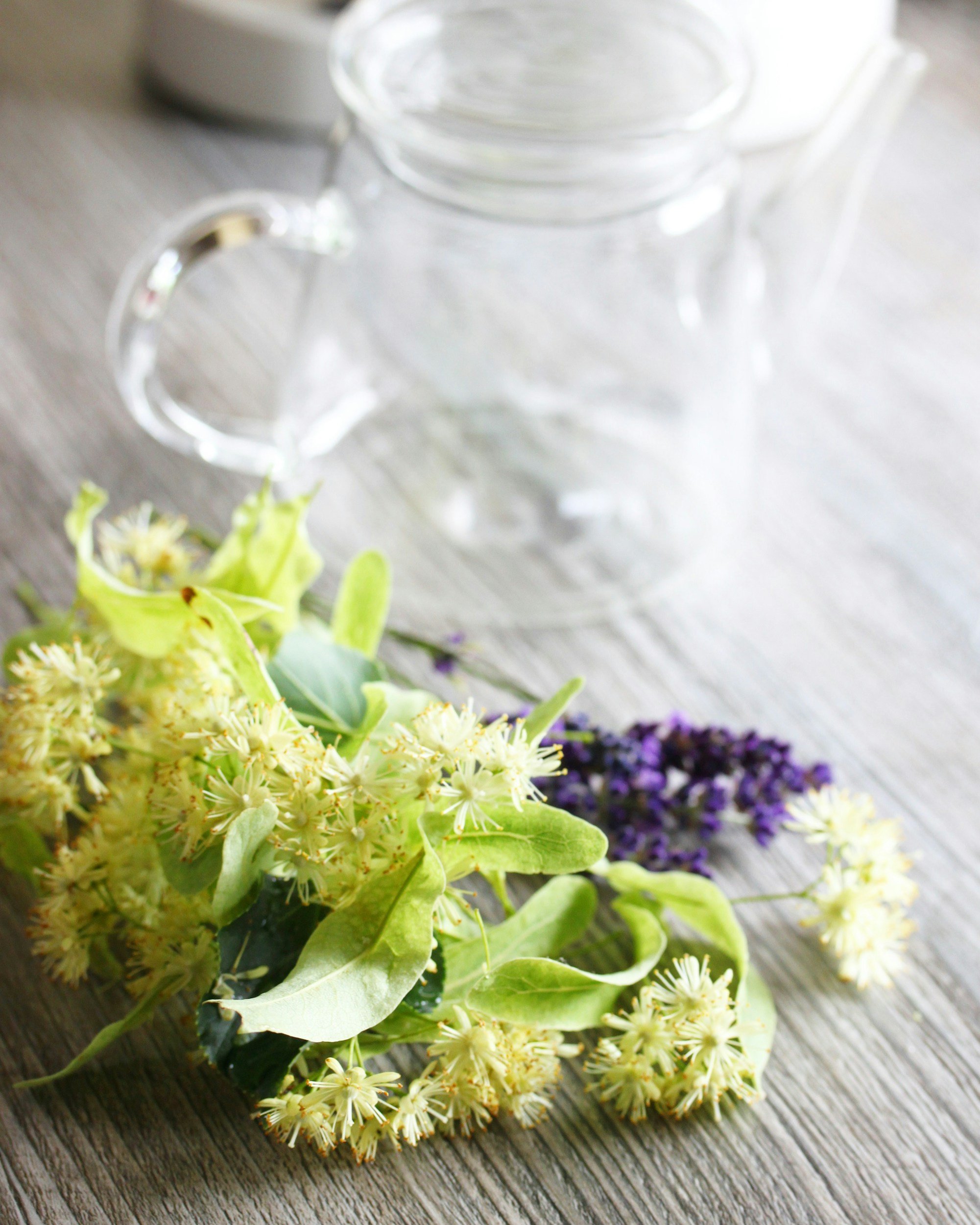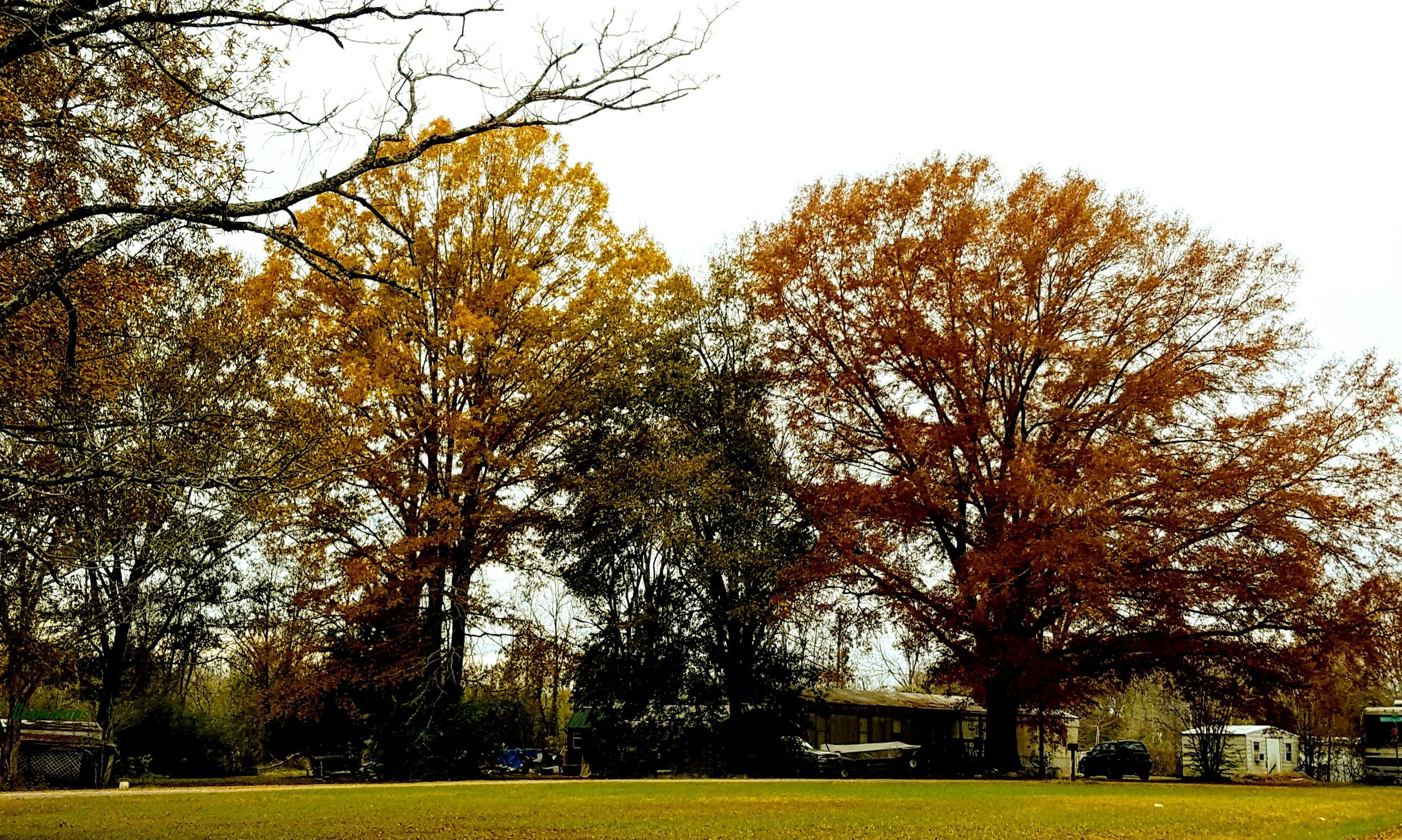
Linden Flower
Linden Flower/ Lime Flower (Tilia spp)
Plant family
Malvaceae
Other significant names
Linde
Lime
(Common, large-leaved and small-leaved lime or linden)
Parts used
Flos (Flowers) with bracts
Top leaves (folia)
Typical forms of prescription
Infusions
Decoction
Tincture
Linden Flower (Tilia spp.) – Clinical Snapshot
Primary Actions
Antispasmodic
Antidepressant
Expectorant
Antitussive
Peripheral vasodilator
Hypotensive
Nervine
Relaxant
Stomachic
Vasodilator
Demulcent
Diaphoretic
Diuretic
Mild astringent
Anti-inflammatory
Primary Indications
Nervous tension, anxiety, stress, irritability, depression, insomnia
Headaches, muscle tension, nervous palpitations
Period pains, menorrhagia, nervous indigestion, colic cramp
Fevers, colds, flu, catarrh, sinus congestion, laryngitis, ear infections, coughs
Inflammatory skin diseases
Hypertension, atherosclerosis, arteriosclerosis
Oedema, arthritis, gout
⚠️Cautions / Safety⚠️
None known.
Tilia spp.
Phytochemistry and Pharmacology
-
Action: Demulcent, anti-inflammatory, soothing
Use: Mucilage relieves irritated mucous membranes, especially in the throat, lungs, and stomach. This makes linden an excellent choice in dry coughs, sore throats, and gastritis, often combined with other demulcents like marshmallow or liquorice.
-
Action: Astringent, anti-inflammatory
Use: Present in modest amounts, tannins add a toning and tightening effect to mucous membranes, supporting linden’s use in diarrhoea, wet coughs, or nasal congestion when tissue is lax or swollen.
-
Includes: Farnesol, citronellal, linalool
Action: Mild sedative, antispasmodic, carminative
Use: These calming aromatic oils contribute to linden’s gentle nervine and relaxing effects, particularly on the nervous and digestive systems. They help soothe nervous tension, digestive cramping, and stress-induced palpitations.
-
Includes: Caffeic acid, chlorogenic acid
Action: Antioxidant, antimicrobial
Use: These support immune response and provide mild antimicrobial properties, reinforcing linden’s traditional use in fevers, especially when taken as a hot infusion to promote sweating.
-
Includes: Quercetin, kaempferol, tiliroside
Action: Antioxidant, anti-inflammatory, mild vasodilator
Use: These flavonoids provide vascular support and anti-inflammatory action, helping reduce capillary fragility and support blood vessel tone. They also contribute to linden’s gentle effect on lowering blood pressure, particularly when linked to stress or tension.
Traditional use
Tilia, known as Linden or Lime tree, has long been revered across Europe as a symbol of love, justice, protection, and victory. In folklore, it was often planted at the centre of village gatherings or labyrinths, representing Yggdrasil—the world tree—linking heaven and earth. Its young leaves were traditionally eaten fresh in salads during spring for nourishment and vitality. During World War II, Linden flower infusions were widely used as a mild tranquilliser, helping calm nerves and ease the emotional strain of wartime living.
Clinical description
Linden is a gentle yet powerful nervine with a strong reputation for soothing anxiety, easing insomnia, and relaxing muscular and emotional tension. It is commonly taken as a tea or long decoction, and unusually for a flower, it lends itself well to slow simmering, which produces a deep red or brown infusion. This preparation is highly effective for:
Anxiety-related digestive upset
Stress-induced insomnia
Muscle tension and irritability in children and adults alike
Rich in mucilage, flavonoids, and volatile oils, Linden also has respiratory and cardiovascular applications:
Acts as a diaphoretic (promotes gentle sweating) to break fevers, especially in colds and flu
Functions as a peripheral vasodilator, which may help reduce blood pressure, arterial tension, and support cases of angina and mild hypertension under the guidance of a practitioner
The fresh spring leaves are soothing and mucilaginous and can be used as a poultice to draw out splinters or soothe minor skin irritation.
Gentle enough for children, Linden is often used to ease colic, restlessness, and overstimulation, either directly or through breastfeeding, where it passes through the mother’s milk. Its cooling, moistening, and comforting qualities make it an ideal herb in states of heat, tension, or emotional overwhelm.
Cultivation/harvesting
Tilia spp. are large deciduous trees, commonly found in parks, woodlands, and along avenues across Europe. They prefer moist, well-drained soils and thrive in temperate climates.
Harvest the flowers along with a few adjacent “top” leaves when they are in full bloom, usually in early to midsummer.
Collect on a dry, sunny day, once the morning dew has lifted, to ensure the best aromatic and mucilaginous quality.
Dry in thin layers, in a shaded, well-ventilated area, and store in airtight jars away from light.
Linden trees are also excellent for pollinators, producing nectar-rich blossoms beloved by bees. In traditional apiculture, Linden honey is considered especially medicinal.
Key Botanical Features of Linden Flower/ Lime Flower (Tilia spp)
Growth
Type: Large deciduous tree.
Size: Typically grows 15–40 meters (50–130 feet) tall, depending on species.
Canopy: Forms a broad, rounded crown with dense foliage.
Trunk/Bark:
Bark is Gray to brown, with vertical ridges developing with age.
Twigs are smooth and may have a reddish tint when young.
Leaves
Type: Simple, alternate.
Shape: Heart-shaped (cordate), with a pointed tip.
Size: Typically 5–15 cm (2–6 inches) long.
Margins: Serrated (finely toothed).
Texture: Soft and smooth on top, with fine hairs underneath.
Colour: Bright green in summer, turning yellow in autumn.
Flowers
Type: Small, fragrant, yellowish-white flowers.
Size: 0.5–1 cm (0.2–0.4 inches) in diameter.
Flower Arrangement: Clustered in drooping, cymose inflorescences, attached to a long, leafy bract that aids seed dispersal.
Blooming Period: Late spring to early summer (typically June–July).
Scent: Strong, sweet fragrance, attracting bees.
Pollination: Primarily by bees, making linden an important honey plant.
Fruits & Seeds
Fruit Type: Small, round nutlets, with a thin, hard shell.
Size: 5–10 mm (0.2–0.4 inches) in diameter.
Dispersal: The bracts act as wings, helping seeds disperse by wind.
Roots
Type: Deep and spreading root system.
Function: Provides firm anchorage, making it resistant to wind.
Habitat & Growth Conditions
Climate: Prefers temperate climates, tolerating cold winters.
Soil: Thrives in moist, well-drained, loamy soils, but adapts to various conditions.
Sunlight: Prefers full sun to partial shade.
Water Requirements: Prefers consistent moisture, but tolerates some drought.
Distribution: Native to Europe, North America, and Asia, commonly found in forests, parks, and urban landscapes.
Sustainability/conservation
Botanical Society of Britain & Ireland (BSBI), least concern.





Sources
Bartram, T. (1998). Bartram’s Encyclopedia of Herbal Medicine. Constable.
Fisher, C. (2009). Materia Medica of Western Herbs, (2018 edition). Finchley Road, London. Aeon Books.
Hedley, C & Shaw, N. (2020). A herbal book of making and taking. Finchley Road, London. Aeon Books.
Hoffmann, D. (2003). Medical Herbalism: The Science and Practice of Herbal Medicine. Healing Arts Press.
McIntyre, A. (2019). The complete herbal tutor, revised and expanded edition. Finchley Road, London. Aeon Books.
Plants of the World Online | Kew Science. (n.d.). Plants of the World Online. https://powo.science.kew.org/
Disclaimer: This page is for educational purposes only. Consult a qualified medical herbalist before using herbs, especially during pregnancy, when trying to conceive, while breastfeeding, for medical conditions, or with children.
Read the full disclaimer → Medical Disclaimer.




